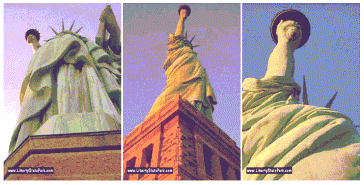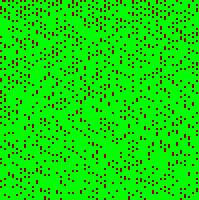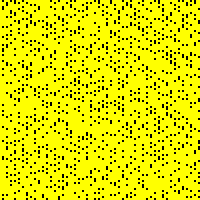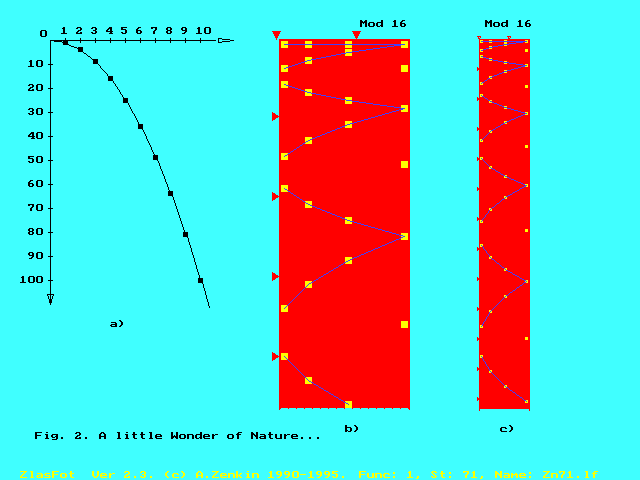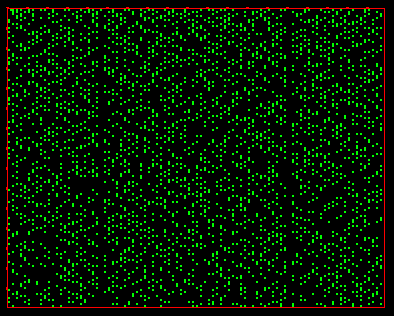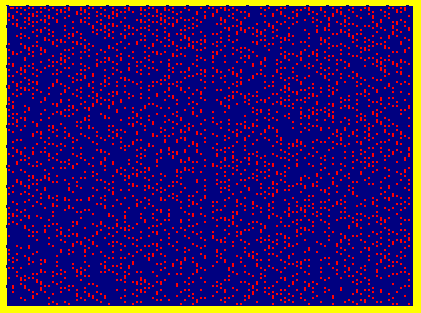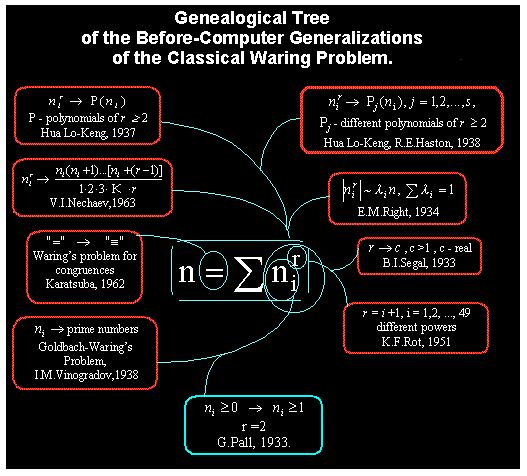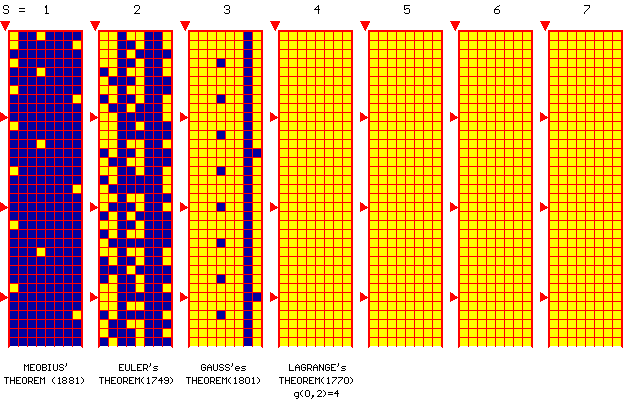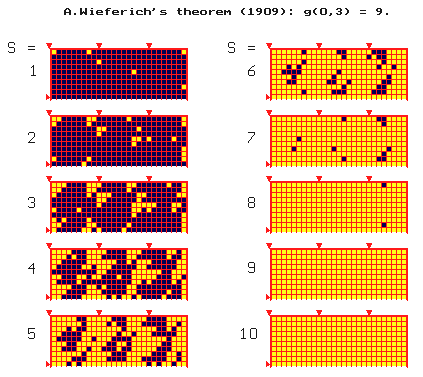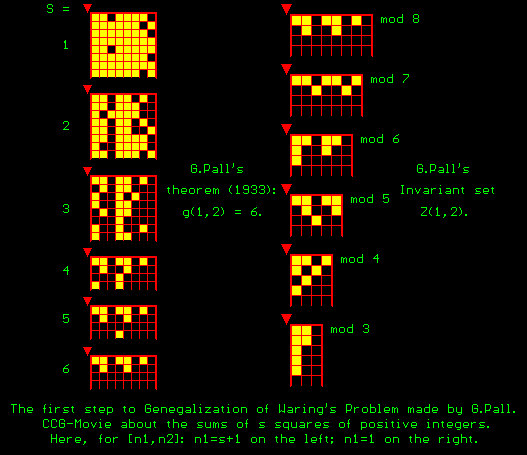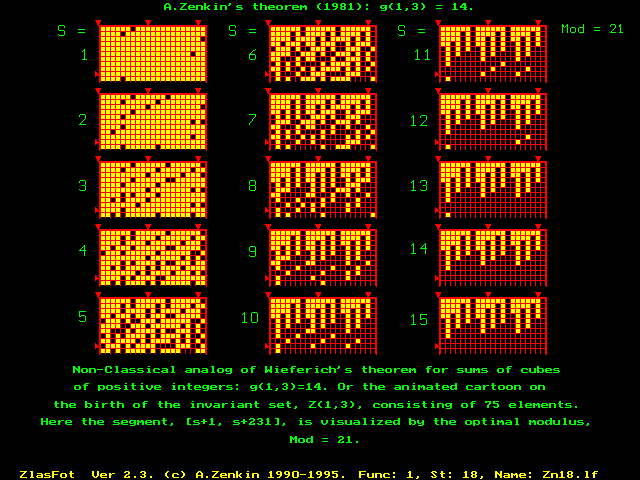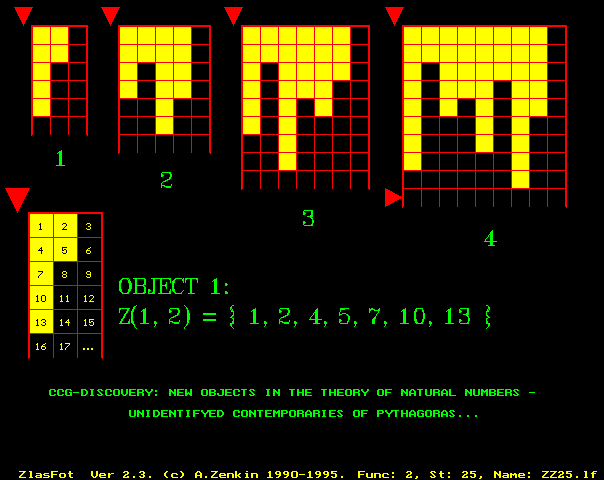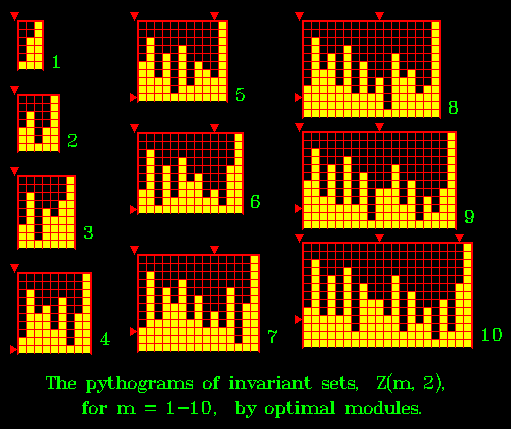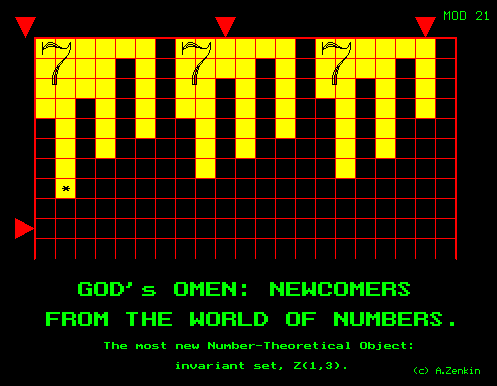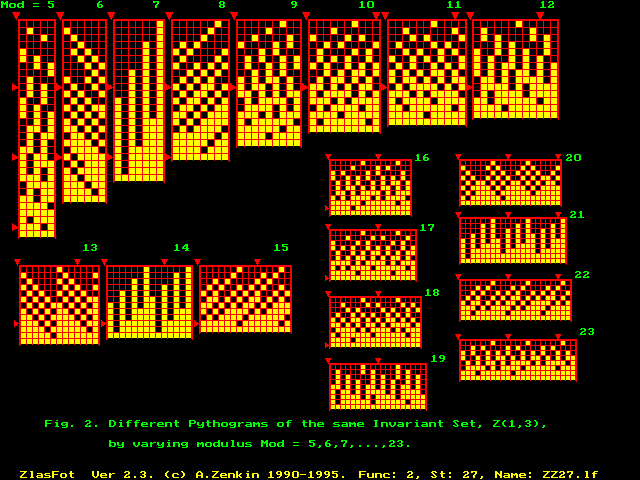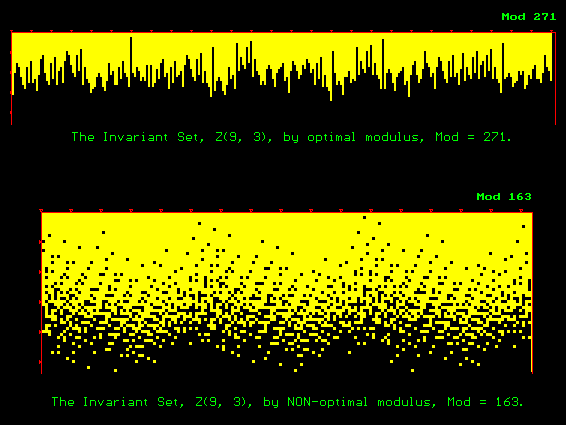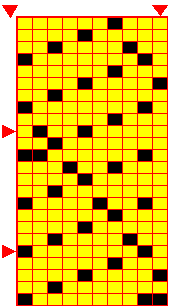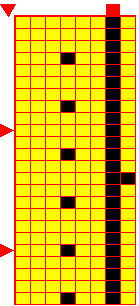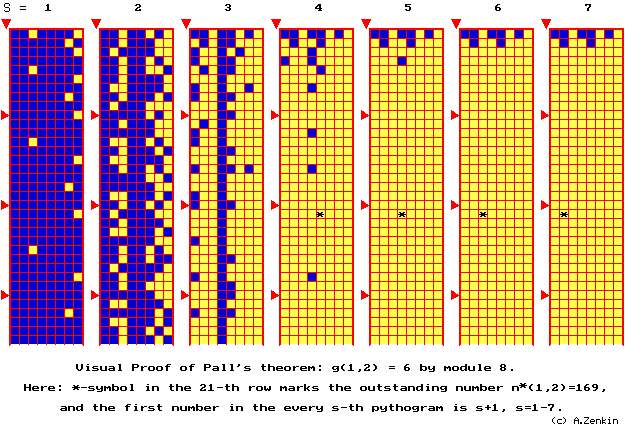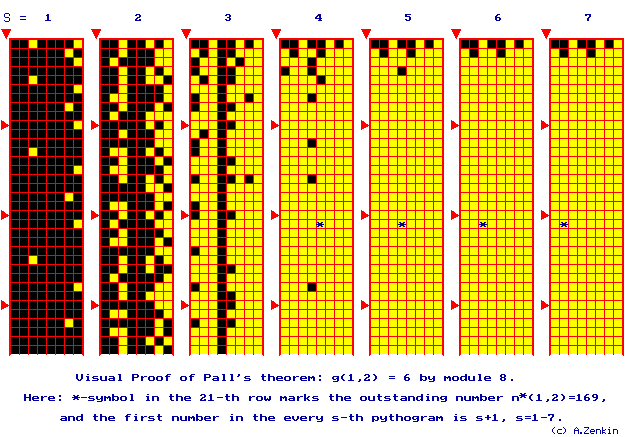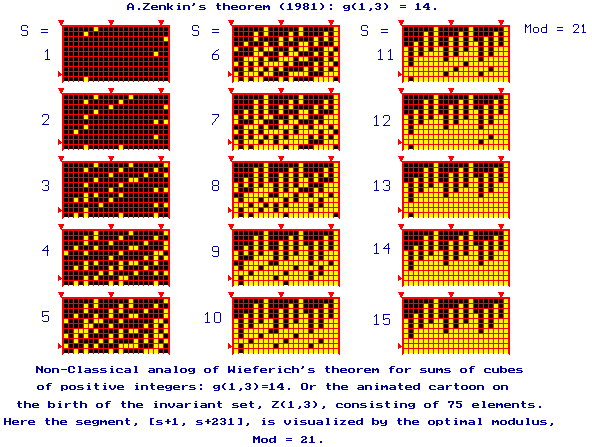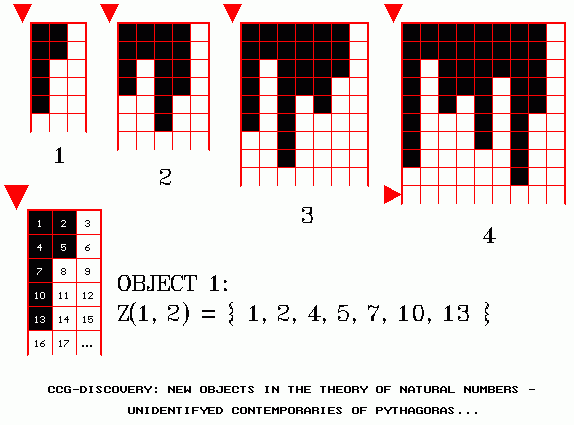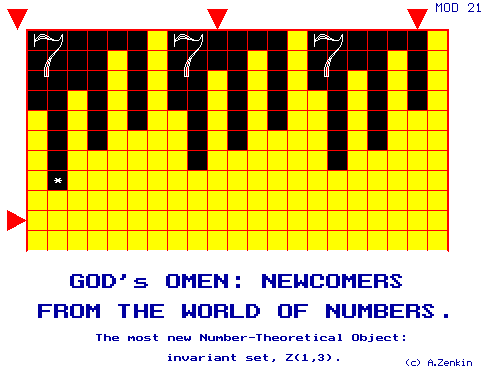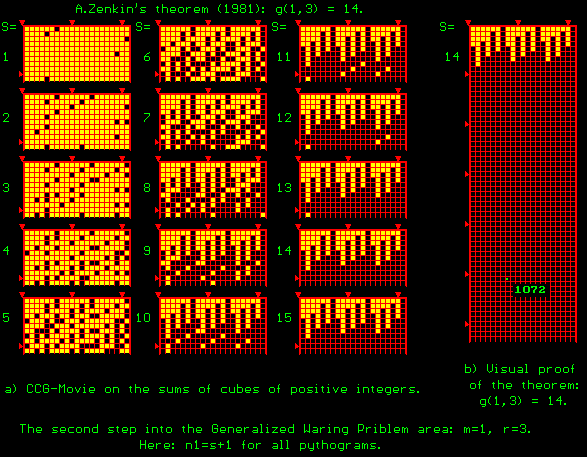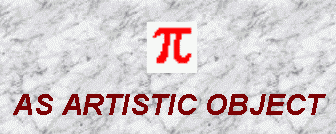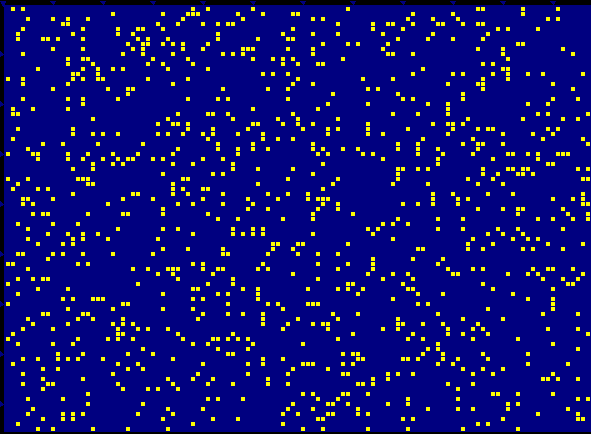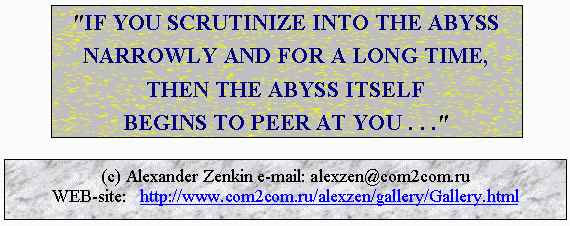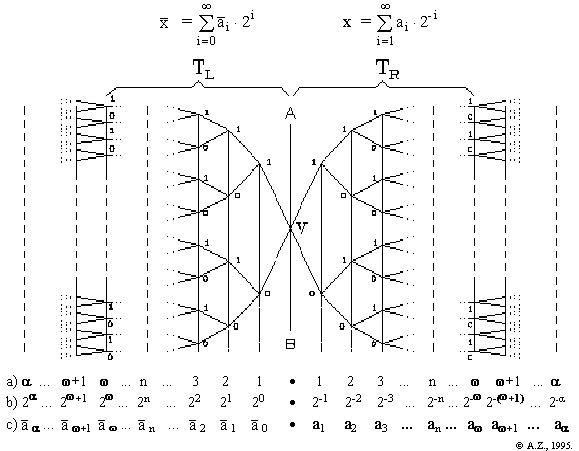is a NEW CCG-TECHNOLOGY
OF SCIENTIFIC COGNITION.
by
Alexander A.
Zenkin
– Prof., Doctor of Physical and Mathematical Sciences, Leading Research Scientist, Department of Theoretical Problems of Artificial Intelligance, Computing Center of the Russian Academy of Sciences, the member of the Russia Philosophical Society, the member of the International Creative Union of Artists
Anton A.
Zenkin
– PhD, CCG-systems developer, project manager.
MAIN
THESIS:
FROM VIRTUAL REALITY TO COGNITIVE REALITY . . .
BASING ON NEWEST MULTI-MEDIA THECHNOLOGIES
OF THE COGNITIVE SEMANTIC COMPUTER VISUALIZATION.
ILLUSTRATIVE GRAPHICS
(http://www.bartleby.com/65/li/LibertyS.html)
AIM: PHOTOGRAPHIC-REALITTY, RECOGNITION.
|
|
ONLOOKER'S REACTION: «HOW THIS LOOKS LIKE AS . . .!»
|
|
THE IMAGE INTERPRETATION
IS REALIZED IN "TERMS" OF A
GENETIC DATA BASE IMPRINTED
IN OUR SUBCONSCIOUSNESS (OUR PAST EXPERIENCE).
COGNITIVE GRAPHICS.
AIM:
GENERATING NEW KNOWLEDGE.
IMPORTANT REMARK:
we recommend to change the screen distance slowly
back and forth from 3'' to 100''
to get the best cognitive effect. !!!
p
-Number: the 1-digit is yellow, all others are black

p
-Number: even digits are red, odd digits are yellow

ONLOOKER'S REACTION: «AND WHAT DOES THAT MEAN . . .?!»
THE IMAGE UNDERSTANDING
IS IMPOSSIBLE
WITHOUT ITS EXPLICIT INTERPRETATION
IN "TERMS" OF A GIVEN PROBLEM DOMIAN.
|
|
|
|
|
|
These two are the same well known discrete
number-theoretical object – Prime Numbers set.
DEFINITION OF THE PYTHOGRAM
Df. 1. The pythogram is a color-musical
2D-image of an abstract Number-Theoretical (NT) object.
Df. 2. NT-object is a segment of the 1D-series of natural numbers, with
a NT-predicate P(n), n ³ 1, defined on
it.
Df. 3. The sense of the Number Theory consists (by B.N.Delone) in the
very difficult to comprehend connection between the additive and multiplicative
properties of natural numbers.
CCG-TECHNIQUE:
· Color all natural numbers in according with the rule: if P(n) then color-1 else color-2.
· Convert the 1D-series of natural numbers into the 2D-image (Table).
· Make musical such 2D-image in according with a function: F(n, P(n), place, value, any other NT-Properties of n, and so on).
|
|
|
Pythogram of the
segment [1,54] of the natural number series by modulus 11. |
MAIN PYTHOGRAM PROPERTIES:
- Additivity of n is modeled by its color.
- Multiplicativity of n is modeled by its position in a j-column of a pythogram to modulus L since " n ³ 1 (if n Î j-column, then n º j (mod L)).
- So, any pythogram as a whole visualizes the unique twice abstract connection between the two abstract properties of the natural numbers - their additivity and multiplicativity properties.
- Changing the pythogram
modulus we get a unique possibility TO SEE this twice abstract
connection
(the SENSE of the Number Theory, by B.N.Delone) in dynamics. - Musical rhythm of a pythogram is an invariant of its mathematical structure, so we can not only to see, but also to hear mathematical properties of this abstract structure..
COGNITIVE EXPLANAITION
OF THE CCG-VISUALIZATION TECHNOLOGY
with
the predicate P(n) = "n is a square of a natural number" as an
example.
|
|
So, consider again the well-known from the Pythagoras time, monotonic, some "dull" series of natural numbers, 1,2,3,...,n, ... , with the predicate P(n) = "n is a natural square". All natural numbers of the series are colored here accoding to the simple rules: "IF P(n) is true, THEN n is yellow, ELSE n is blue". The quantity of numbers in a row of the pythogram (a so-called modulus of the pythogram) we can choice arbitrary, and let it will be here equal to 8 (see Fig. a). As is know, there are too many natural numbers, therefore particular numbers are not of interest for us: we shall erase them by decreasing size of cells (Fig. b). This allows us to increase greatly the surveyed area. The modulus of the pythogram is a unique degree of freedom: changing the modulus we produce a CCG-movie about a NT-predicate P(n) as a whole image (Gestalt). Some frames of that movie you can see in Fig. c. Such CCG-Movies permit first to see unknown geometrical properties of abstract mathematical structures (Fig.d): you can see these beautiful dynamic transformations of the same mathematical object - of the well-known set of squares {1,4,9,16,25,36,49,...}.
CCG-METHODOLOGY (SEMIOTICS OF CCG-IMAGES):
General scheme of CCG-investigations:
|
WATCH |
a pythogram or CCG-movie; |
|
SEE |
graphic features of the pythogram; |
|
INTERPRET |
these graphic features in terms of a given problem domain; |
|
FORMULATE |
a CCG-statement; |
|
GENERALIZE |
that CCG-statement; |
|
PROVE |
a new mathematical theorem. |
Remark here, that using exactly this CCG-technique, we could generalize the most famous number-theoretical achievement of D.Hilbert - his complete solution (1909) of Classical Waring's Problem (1770) - see below.
INTELLECTUAL
CCG-INSIGHTS
INTO THE COGNITIVE WORLD
OF NATURAL NUMBERS
for more info see:
http://www.com2com.ru/alexzen/
and
ARTISTIC p -NUMBER
GALLERY
Cognitive Semantic Visualization of the p -Number :
http://www.com2com.ru/alexzen/gallery/Gallery.html
Quadratic Holography
of Natural Numbers …
THE GREAT PYTHAGORAS' DREAM:
THE WORLD AS A HARMONIC UNITY OF NUMBER, IMAGE, AND
MUSIC.
Remind once more: when you are looking at the
pythograms,
change slowly the distance to the screen.
During more than 3000
years, the Humankind is "staring at" such the "trivial" and
exhaustively investigated mathematical object, as the set of squares of natural
numbers:
1,2,3,4,5,6,7,8,9,10,11,12,13,14,15,16,17,18,19,20,21,22,23,24,25,26, … (1)
The
pythogram modulus is a unique degree of our freedom: changing the modulus, we
create a CCG-movie, which is not only interesting from the point of view of the
mathematical and intelligent aesthetics, but which permits us to see new
dynamic properties of abstract NT-structures. As a rule, such the
dynamic mathematical properties are simply incomprehensible in statics! One of
the frames of this CCG-movie (by mod=131) is shown in the next Fig. We can see
here a number of surprising new and non-trivial NT-facts (virtual geometrical
objects).
|
|
A
frame of the CCG-movie about a lot of unknown dynamic properties of the
well-known series (1) of natural numbers (here by modulus 131). - If you are
not in raptures about seeing this highest intellectual-aesthetic Wonder of the
Natural Numbers World (almost by H.Hesse’s "Das Glassperlenspiel":
remember about NT-Music!), then Mathematics is not your vocation...
LEIBNIZ'S BLUE DREAM:
TO AWAKE A THOUGHT BY MEANS OF FIGURES...
In the far
"non-computer" epoch, great Gotfried Leibniz supposed that
"figures are useful to awake a thought". The CCG-technology
open unique opportunities just for awakening a non-traditional mathematical
thought. We suggest some not quite ordinary examples.
|
|
|
|
The most beautiful and
unexpected CCG-Discovery: traditional (a) and non-traditional (b,c) forms of
the visual representation of one and the same mathematical object - of the
well-known natural squares set, {1, 4, 9, 16, 25, 36, ...}. We have got a
certain new "paradox" in modern mathematics: a distance between a)
and b) is equal to ... about 2000 years! To draw b) could even Pythagoras. In
1841, Meobius drew very similar parabolas, even by the modulus 16 (!), in his
known nomographical works for a graphic multiplication of integers. But only
CCG allows us to see for the first time this fantastic transformation: one, but infinite
parabola is transformed into the infinite
family of finite parabolas ! – That
is not only a number-theoretical fact, but it is a deep philosophical event. -
More details as to the virtual geometry of natural numbers see here.
PRIME NUMBERS PYTHOGRAMs
|
|
|
|
|
|
Even modern Mathematics does not know what law of nature generates the
prime numbers.
But if that law exists in reality, then you now are looking at how it works!.
Possibly, just such the pictures will help anybody of you to understand the
mathematical nature of the law
and to formulate it directly now. :-)
CLASSICAL WARING's PROBLEM (1770):
 (1)
(1)
WARING'S HYPOTHESIS. For any fixed r³ 2, there is a minimal number of summands, say, s=g(r)
such that any natural number n³ 1 is representable as a sum (1) for any s ³ g(r).
CCG-GENERALIZED WARING's PROBLEM (1980):
 (2)
(2)
COMMON PROBLEM OF ADDITIVE NUMBER THEORY.
Given fixed m³ 0, r³ 2, s³ 1. What n³ 1 are representable and what
aren't by sums (2)?
GENERELIZED WARING'S PROBLEM.
For any fixed m³ 0, r³ 2, there is a minimal number
of summands, say, s=g(m,r) such that any natural number n³ n0(m,r,s) is
representable as a sum (2). – Details see below.
Some main
publications:
1.
A.A.Zenkin, Cognitive Computer Graphics. Applications in Classical
Theory of Natural Numbers. (Synopsis) - Moscow: "NAUKA", 1991, 191 pp.
2. A.A.Zenkin, Waring's problem from the standpoint of the
cognitive interactive computer graphics. - Math. & Comput.
Modelling, Vol.13, No.11, 9 - 36, 1990.
3. A.A.Zenkin, Waring's problem: g(1,4) = 21 for fourth powers of positive
integers.- Comput. & Math. with Applics, Vol. 17, No. 11,
1503 - 1506, 1989.
FOR HIGH NT-EXPERTS:
4.
A.A.Zenkin, Main CCG-results as to the Generalized
Waring's Problem. - on e-mail request (~800Kb)
|
|
A mathematical puzzle: show, please, what so
far was not generalized in this problem?
A STORY ABOUT CCG-DISCOVERY OF
GENERALIZED WARING'S PROBLEM.
Consider
the problem on the representation of natural numbers n ³ 1 by sums of the form
 (1)
(1)
where m ³ 0, r ³ 2, s ³ 1 - are fixed integers.
If
m = 0, this is the Classical Waring
Problem (CWP), which was formulated in 1770 for the first time. Euler, Lagrange, Gauss, Legandre and many other
outstanding mathematicians of XVIII-XX CC. (which were possessed of the eminent
scientific intuition!) were investigating the Classical Waring Problem (CWP)
during more than a hundred years. However, only in 1909, the greatest German
mathematician David Hilbert gave the
complete solution of CWP (see Table 1, the left column).
Table 1. Logical and
semantical isomorphism of classical and non-classical Waring's problem.
|
CLASSICAL WARING's PROBLEM |
GENERALIZED WARING's PROBLEM |
|
For the fixed m = 0 |
For any m = 1, 2, 3, ... |
HERE: for arbitrary values
of the parameters m ³ 0, r ³ 2, and s ³ 1, the following two families of sets of natural numbers are defined:
![]() ,
,
![]() ,
,
and the following two
arithmetic functions:
![]()
where |X| denotes the
number of elements of an arbitrary set X.
In
general, the traditional mathematics "was staring" at the Classical
Waring Problem (CWP) more than 200 years. However, only CCG-visualization has
allowed us to see the completely unexpected fact, that the CWP
represents only the 0-floor of a much more general ¥ -floor problem - so called Generalized Waring's Problem (GWP) (see
Table 1, the right column). - Why not "a relativity theory" of the traditional
mathematical values! - Can’t we now formulate (and prove!) the famous classical
(m=0) Lagrange theorem for every m=1,2,3,...?!
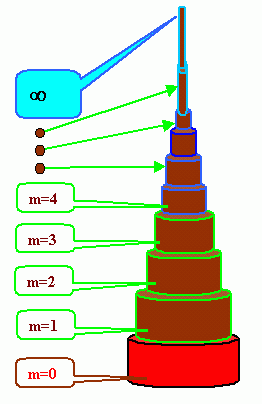
CLASSICAL (m=0)
AND GENERALIZED (m=1,2,3, ...) WARING's PROBLEM
THE DRAMATIC HISTORY
OF CLASSICAL NUMBER THEORY IN 1749 – 1801
|
|
|
|
|
Classical Waring’s Problem for sums of
squares: m=0, r=2. |
|
|
|
Classical Waring's Problem for sums of cubes: m=0, r=3. |
THE FIRST BEFORE COMPUTER ERA STEP
FROM CLASSICAL (m=0) TO GENERALIZED (m=1)
WARING'S PROBLEM FOR SQAURES (r=2)
MADE BY AMERICAN MATHEMATICIAN G.PALL (1933)
|
|
G.PALL’s
THEOREM (1933). By
any s ³ 6, any natural number n ³ 1 is representable as a sum of exactly s squares of positive integers, except
for the numbers 1,2,3,..., s-1, and those of the form s +
{1,2,4,5,7,10,13}.
THE SECOND AND NEXT STEPS
FROM CLASSICAL (m=0) TO GENERALIZED (m=1)
WARING'S PROBLEM FOR CUBES (r=3)
1979
|
|
A.ZENKIN’s
THEOREM (1979). For
any s ³ 14, any natural number n ³ 1 is representable as a sum of exactly s squares of positive
integers, except for the numbers 1,2,3,..., s-1, and those of the form s
+ Z(1,3), where the set, Z(1,3), is known explicitly.
OF NEW NUMBER-THEORETICAL
OBJECTS
IN THE VERY BEGINNING
OF THE COMMON SERIES
OF COMMON FINITE NATURAL NUMBERS
|
|
|
Color-musical pythograms of new mathematical
objects, discovered by CCG-approach: |
OTHER NEW OBJECTS OF THE SAME FAMILY r = 2,
BUT WITH DIFFERENT m = 1-10.
|
|
|
|
|
NEW FAMILY OF OBJECTS |
|
|
|
The invariant set of
Generalized Waring's Problem, |
|
|
|
The same object Z(1,3) by
different modules. |
|
COMPARE THE OPTIMAL
MODULUS WITH A NON-OPTIMAL ONE |
|
|
Our experience shows that
such the pythograms by non-optimal modulus are usually very beautiful from the
intellectual aesthetics point of view, but their mathematical interpretation is
not always obvious. On the contrary, the pythograms by optimal modulus are
usually not only semantically fine, but as a rule demonstrate quite explicitly
new unexpected features of abstract mathematical structures visually. The
CCG-System Pythagoras is able now automatically to search for such the optimal
modulus of pythograms (solving a discrete optimal control problem with a
formalized "Semantical Beauty" as an optimization criterion), to
search for new mathematical facts, and to formulate new mathematical statements
in a printed form customary for publication in matheamtical journals. : -)
The CCG-searching of a
semantically beautiful (optimal) modulus (here mod 8),
and formulation of the mathematical result.
EXAMPLE 1. Gausses Theorem about sums of three squares (1801).
|
|
|
|
|
|
COMPARISON OF VALUES OF THE
FUNCTION G(m, r)
FOR ANY m ³ 1 WITH THE CLASSICAL CASE m = 0.
HYPOTHESIS. " m³ 0 " r³ 2 [ G(m, r) º G(0, r) ] ???.
COUNTER-EXAMPLE.
- LAGRANGE’S
THEOREM (1770). g(0,2) = 4, i.e. N(0,2,4) = Æ .
|
|
COROLLARY 1. G(0,2) £ 4.
GAUSS’ THEOREM (1801). " n ³ 1 { if n = (8k+7)× 4l, k, l = 0, 1, 2, ...
then n Î N(0,2,3) }, i.e.
|N(0,2,3)| = ¥ .
COROLLARY 2. G(0,2) > 3.
COROLLARY 3. G(0,2) = 4.
B) G.PALL’S THEOREM 1 (1933). g(1,2) = 6, and
|N(1,2,5)| < ¥ .
|
|
COROLLARY 4.
G(1,2) £ 5.
DESCARTES’ THEOREM. " n ³ 1 { if n =
(2, 6, 14)× 4l,
k, l = 0, 1, 2, ...then n Î N(1,2,4) }, i.e. |N(1,2,4)| = ¥ .
COROLLARY
5. G(1,2) > 4.
COROLLARY 6. G(1,2) = 5.
So, we have proved:
G.PALL’S THEOREM 2 (1933). G(1, 2) > G(0, 2).
The Theorem shows that the
Hypothesis " m³ 0 " r³ 2
[ G(m, r) º G(0, r) ] (see above) is false, and consequently, the transition
from any m to m+1 is non-trivial.
GENERALIZATION OF THE CLASSICAL
WARING PROBLEM.
|
|
G.PALL’s
THEOREM (1933). By
any s ³ 6, any natural number n ³ 1 is representable as a sum of exactly s squares of positive integers,
except for the numbers 1,2,3,..., s-1, and the numbers of the form s +
{1,2,4,5,7,10,13}.
G.PALL’s THEOREM 2. By s=5, any natural number n ³ 1 is representable as a sum of
exactly 5 squares of positive integers, except for the numbers 1,2,3,4,
5+{1,2,4,5,7,10,13} and the number 33.
|
|
A.ZENKIN’s
THEOREM (1979). For
any s ³ 14, any natural number n ³ 1 is representable as a sum of exactly s squares of positive integers,
except for the numbers 1,2,3,..., s-1, and the numbers of the form s + Z(1,3),
where the set, Z(1,3), is known explicitly.
for more information:
Zenkin A.A. Waring's problem from the standpoint of the
cognitive interactive computer graphics. - Mathematical and
Computer Modelling, Vol.13, No. 11, pp. 9 - 25, 1990.
Zenkin A.A. Some picturesque generalizations of Nechaev-Waring's problem
obtained by means of cognitive interactive computer graphics. - Mathematical
and Computer Modelling, Vol.13, No. 11, pp. 27 - 36, 1990.
Zenkin A.A. Waring's problem: g(1,4) = 21 for fourth powers
of positive integers.- Computers and Mathematics with
Applications, Vol.17, No. 11, pp. 1503 - 1506, 1989.
Zenkin
A.A. Generalized Waring's Problem: G(m,r)£ G(0,r) +m+1 for any m ³ 1, r ³ 3. - Doklady Mathematics, vol 56, No. 1, pp. 499-501
(1997). Translated from Doklady Akademii Nauk, Vol 355, No. 2, 1997, pp. 151 -
153.
OF
A NEW UNIVERSAL PROPERTY
OF
COMMON NATURAL NUMBERS.
FOR MORE INFO SEE
http://www.com2com.ru/alexzen/papers.html#pub2
GENERALIZED WARING’S PROBLEM:
NEW UNIVERSAL PROPERTY OF NATURAL NUMBERS.
1980: GWP: n =![]() , ni ³ m, where m ³ 0, r ³ 2, s ³ 1 - fixed integers.
, ni ³ m, where m ³ 0, r ³ 2, s ³ 1 - fixed integers.
1933: PALL’S THEOREM. By m=1, " s ³ 6 " n ³ 1 ( n = ![]() , ni ³ 1 ),
, ni ³ 1 ),
except for 1, 2, ..., s-1, and s+z, z Î Z(1,2) = {1, 2, 4, 5, 7, 10,
13}.
1964: W.Sierpinski, "Elementary Theory of
Numbers". - Warsaw, 1964.
Page
379: there is Pall’s theorem (1933) formulation and its complete proof.
Page
380: there is
FACT 1. The number 169 = ![]() , ni ³ 1, simultaniously
for all
, ni ³ 1, simultaniously
for all
s
= 1 ¸ 155, 157, 158,
160, 161, 163, 166, 169.
1993:
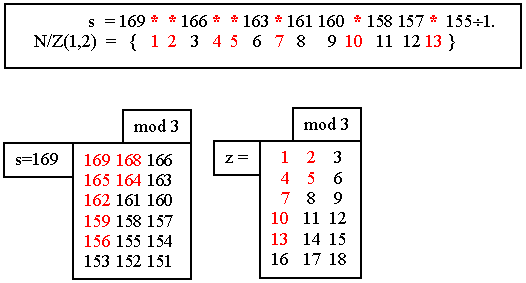
So, all the necessary information to
discover this new property of natural number was presented in the pages 379 and
380 of the Sierpinski monography which was a handbook of almost every
mathematician during many years from 1964. But nobody could see this Fact 1. Only
CCG-visualization allowed us to see the following
CCG-PROMPT: s ¹ 169 - z, z Î Z(1,2).
and
CCG-FACT
1a.
169 = ![]() , ni ³ 1, by all s, 1 £ s £ 169, except for s = 169
- z, z Î Z(1,2).
, ni ³ 1, by all s, 1 £ s £ 169, except for s = 169
- z, z Î Z(1,2).
CCG-FACT
2. The numbers like
169 are: 132, 152, 172, 252, 302,...
- in all 35 numbers among the first hundred.
Ó A.Z., 1995.
FUNDAMENTAL UNIVERSAL PROPERTIES
OF NATURAL NUMBERS.
1. "TO
SUCCEED" (the Definition of the Natural Number Concept) :
" n $ ! ( n + 1).
2. MULTIPLICATIVE
REPRESENTATION :
" n $ ! ( n =  ),
),
where all
pi, 1 £ i £ kn, are different
prime numbers, and all ri³ 1.
3. ADDITIVE REPRESENTATION ( New Property ):
" n $ ( n =  ) simultaniously
for all s, 1 £ s £ n,
) simultaniously
for all s, 1 £ s £ n,
EXCEPT FOR : 1) all s > [n/mr
];
2) all s: n= s × mr + z, z Î Z(m,r);
3) possibly, some s < g(m,r).
Visual explanation of the
new property sense:

Fixe any integers m³ 1, r³ 2. Then any natural number n
is representable as a sum (*) simultaneously for all s, A £ s < B, where A=g(m,r) and B = n - max{Z(m,r)}. Whether this n is or
isn't representable as a sum (*) for s < A and s ³ B is unambiguously defined by the main parameters g(m,r) and Z(m,r) of
the Generalized Waring's Problem.
So,
the new additive universal property of natural numbers gives a complete solution of the problem about the number
of representations of any n > m by sums of r-th powers of ni ³ m by any fixed r³ 2, m³ 1.
For more information see:
Zenkin A.A., Generalized Waring’s problem: about one new property of natural
numbers. - "Math. Zametki", vol. 58, No.6, 372 - 378 (1995).
Ó A.Z., 1995
AS A NEW DIRECTION
OF CELLULAR
CCG-AUTOMATA
A NEW VERSION OF
JOHN CONWAY'S
"THE GAME OF
LIFE"
for more info see
COGNITIVE COMPUTER GRAPHICS AND
CELLULAR AUTOMATA
NUMBER THEORY AND CELLULAR
AUTOMATA
HERE: John Conway's "The
Game of Life" configurations
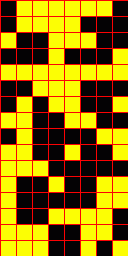
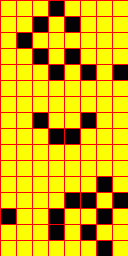
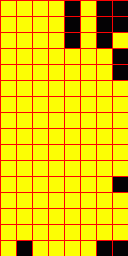
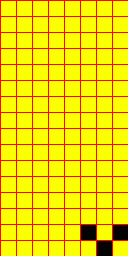
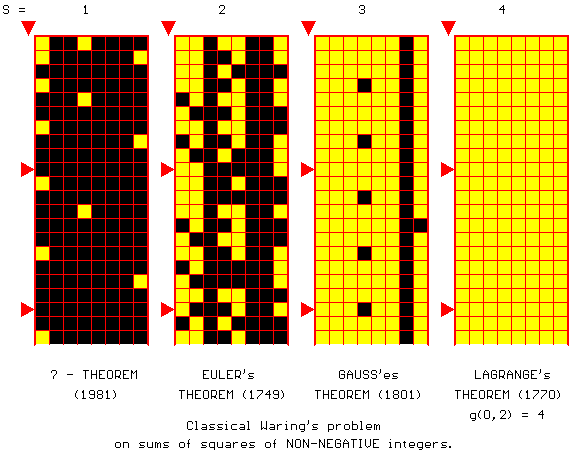
EXAMPLE.
Gauss' Theorem (1801). By m=0, r=2, any natural number, n, is a sum of three cubes of
non-negative integers (here - yellow), EXCEPT FOR the numbers of the form (here
- black): n = 4l (8k + 7), by all l,k = 0,1,2, ,… .
Zentralblatt fur
Mathematik: 753.11045 ( 1993 ?)
Zenkin, A.A., Cognitive computer graphics.
Applications in Theory of Natural Numbers. Ed. by D.A.Pospelov. (Russian. English
summary);[B] Moskva: Nauka. 192 p. (1991). [ISBN 5-02-014143-7]
This book contains an exposition of the author's approach to studying abstract
number-theoretic problems using techniques of interactive computer graphics. Mostly
he has examined Waring's problem and its generalizations [see the review of his
paper in Math. Comput. Modelling 13, No. 11, 9-25 (1990) below for a detailed
discussion of the procedure in this case […], the use of pythograms seems to be
a valid and useful metaprocedure for stimulating intuition. Since the
pythograms look like cellular automata, the reviewer wonders what the
relationship is. [ J.S.Joel (Kelly) ]
CLASSICAL WARING'S PROBLEM AS A
CELLULAR AUTOMATON.
All additive Number Theory can be
re-formulated in the cellular automaton language in the following way. In
general, our cellular automaton field is a two-dimensional matrix (table) with
M column (the modulus of the CCG-image) and the infinite numbers of
strings.
In practice (due to natural computer graphics limits) the modulus M and a
number of strings N are limited by not very large finite values. However, using
a window-technique, we can visualize and look through quite large and distant
segments [n1, n2] of the Natural Numbers series, or what
is the same, - of that cellular automaton field.
For the simplest case r=2, the initial state-configuration (s=1) of our
cellular automaton is defined by the predicate:
P(n;r;s) = P(n;2;1) = "n is a sum of ONE square".
Now we define the
following simplest, but very natural rule for generating next
step-configurations of our cellular automaton, which is defined by the
formulation itself of the Classical Waring's Problem and by the nature itself
of Natural Numbers: for any s ³ 1 and for any n ³ 1:
IF P(n; 2; s) is true THEN
P(n+k2; 2; s+1) is true too, where k=0,1,2, …
So, beginning from the initial
configuration S1 (by s=1) and changing the parameter s (a time analog),
we can now generate the following sequence of automata configurations:
S2 (s=2): the corresponding CCG-image
(a cellular automaton state) represents the famous Euler's
Theorem (1749) on sums of two squares;
S3
(s=3): the corresponding CCG-image (a cellular automaton state) represents the
famous Gauss'es Theorem (1801) on sums
of three squares;
S4
(s=4): the corresponding CCG-image represents the famous
Lagrange's Theorem (1770) on sums of four squares;
S5=S6= . . . - the corresponding CCG-images (a cellular automaton
states) are the same and we have a stationary "point" of our cellular
automaton.
So,
the simple sequence (CCG-movie) of the cellular automaton configurations {S1,
S2, S3, S4, …} shows us a whole half-century history (1749-1801) of
Classical Waring's Problem.
COMMON CASE. For any m=0, r³ 2, s³ 1,
P(n;r;s) = "n is a sum of s r-th powers",
and the transformation rule
is:
IF P(n; r; s) is true THEN
P(n+k2; r; s+1) is true too, where k=0,1,2, …
NEW LOGICAL METHOD
FOR MATHEMATICAL PROOFS
WITH A COMPUTER
for more info see
SUPER-INDUCTION METHOD:
LOGICAL ACUPUNCTURE OF MATHEMATICAL INFINITY.
XX WORLD CONGRESS OF PHILOSOPHY. PAIDEIA Project ON-Line
(at the PAIDEIA-site) http://www.bu.edu/wcp/Papers/Logi/LogiZenk.htm
SEE also: http://www.philosophy.ru/library/fm/zenkin.html (in Russian)
In 1949, German mathematician H.E.Richert proved
the following quite strange inductive statement [1]: "IF there exists a
natural number, say, n* such that Q(n*) is true THEN for any natural number
n>n* P(n) is ture", or in a short symbolic notation:
[$ n*Q(n*)] ® ["
n>n*P(n)], (1)
where P
and Q=f(P) are two collections of number-theoretical properties of common
finite natural numbers (or predicates given on the natural numbers set).
So, the H.E.Richert Theorem (further - EA-Theorem)
is a mathematical, i.e., authentic, proof of the inductive statement of the
quite unusual form: "from a SINGLE
statement, [$ n*Q(n*)], to a COMMON one, [" n>n*P(n)]".
In
1978, using Cognitive Computer
Visualization of mathematical abstractions technology [2], I discovered two new
different classes of such the EA-Theorems and formulated the Super-Induction
(SI) method [3]. By means of the SI-method, a lot of conceptually new
scientific results was obtained in Classical Number Theory [ 4 ]
Note
some unexpected connections of SI-method with some basic logical conceptions.
1. According to inductive
J.S.Mill's Logic, we always can formulate a common statement,
say, H basing on a set of particular facts, but such H will always be
only a plausible statement. The existence itself of EA-Theorems (1) and
SI-method show that the main inductive Logic paradigm is broken in some areas
of discrete mathematics.
2. The Aristotle's modus ponens rule sounds so: [A&[A® B]] ® B. Mathematical Logic and
meta-Mathematics consider the implication [A® B] as a deductive inference of a less
common consequence B (e.g., a theorem) from a more common premise A
(e.g., an axiom system). SI-method generalizes the "modus ponens"
rule to the case when the premis A is a single statement, but the
consequence B is a common one.
3. It can be easy shown, that the
SI-method generalizes the classical complete
mathematical induction B.Pascal's method. Moreover, SI-method
works well there where B.Pascal's method simply does not work [5].
4. Cognitive Visualization of
mathematical abstractions and SI-method allow, by certain conditions, to use
corresponding cognitive images as quite legitimate arguments in rigorous
mathematical proofs, i.e., they realize an authentic
ostensive
proofs in, say, L.E.J.Brouwer's sense [3, 6, 7].
The project was supported by
G.Soros' ISF (grant ZZ5000/114; the title: "Cognitive Computer Graphics
– a New Window In the World Of Cognition".), RHSF (grant 98-03-04348;
the title: "Cognitive Computer Graphics: New Approaches In Logic And
Philosophy Of Mathematical Infinity") and RBSF (grant 98-01-00339; the
title: "Cognitive Computer Graphics: New CCG-Technology For a New
Scientific Knowledge Generation").
REFERENCES.
1. Richert, H.E., Uber
Zerlegungen in paarweise vershiedene Zahlen, Norsk Mat. Tidssk. 31 (1949),
pp. 120-122.
2. A.A.Zenkin, Cognitive Computer Graphics. Applications in Theory of
Natural Numbers. - Moscow: "NAUKA", 1991, 191 pp.
3. A.A.Zenkin, Superinduction: A New Method For Proving General Mathematical
Statements With A Computer. - Doklady Mathematics,Vol.55,No.3, 410-413
(1997).
4. A.A.Zenkin, Waring's problem from the standpoint
of the cognitive interactive computer graphics. - "Math. & Comput. Modelling",
Vol.13, No.11, 9 - 36, 1990.
5. A.A.Zenkin, Waring's problem: g(1,4) = 21 for fourth powers of positive integers.- Comput. & Math. with Applics,
Vol. 17, No. 11, 1503 - 1506, 1989.
6. A.A.Zenkin, Super-Induction Method: Logical Akupuncture of
Mathematical Infinity. - XX WCP. Paideia. Boston, U.S.A., 1998. Proceedings, Section
"Logic and Philosophy of Logic".
7. A.A.Zenkin, Cognitive Graphics for Obtaining New Knowledge. -
Proceedings On Workshop on Russian Situation Control and Cybernetic/Semiotic
Modelling, Edr. Robert J. Strol, Columbus,Ohio, U.S.A., pp. 79-100 (1996).
THE LOGICAL SCHEME OF THE
SUPER-INDUCTION METHOD.
1. It is required to prove the COMMON statement: " n³ 1 P(n).
2. We construct (today - invent !) an
apt new predicate Q(n) and design the following CONDITIONAL statement (so-called EA-Theorem):
[$ n*Q(n*)] ® ["
n>n*P(n)], (1)
where Q =
f (P), and Q ¹ P.
3. We prove (ANALYTICALLY) that conditional
statement (1).
4. We search for (usually, with
a computer, but it is not forbided manually, if any!) natural number n* ( it is
enough to find one of such numbers), possessing the unique set of the
number-theoretical properties Q(n*).
IF we have found such the unique number n*, THEN:
5. We have proved the reliable truth of the
antecedent of the implication (1), that is the single statement, $ n*Q(n*).
6. By MODUS PONENS rule,
we conclude:
$ n*Q(n*), $
n*Q(n*) ® " n>n*P(n) |- "
n>n*P(n),
i.e., we have
proved the reliable truth of the consequent of the implication (1),
that is the common statement, " n>n*P(n).
7. For all n £ n*, we check up the
truth values of P(n) (as a rule, with a computer, by means of the corresponding
CCG-picture or manually - that is not essentially for the reliability of such
the checking up), and produce a set,
Ne = { n £ n* : Ø P(n)
},
of
exceptional elements.
8. Thus, we have proved the common
mathematical statement:
" n Î N
P(n), EXCEPT FOR " n Î Ne
= { n £ n* : Ø P(n)
}.
REMARK. If the set, Ne
is empty then we have proved the traditional: " n³ 1 P(n).

REFERENES:
A.A.Zenkin, Superinduction: a New Method for
Proving General Mathematical Statements with a Computer. - Doklady Mathematics, Vol.55,
No.3, pp. 410-413 (1997).
SUPER-INDUCTION METHOD GENERALIZES
THE B.PASCAL'S MATHEMATICAL INDUCTION METHOD.
According
to:
N.Bourbaki, Set Theory, - Moscow : Mir, 1965, pp. 199 (in Russian). Complete
Mathematical Induction Method (CMIM) (or "Induction Principle"
by NB):
C61. [P(0) & [" n [P(n) ® P(n+1)]]] ® " n P(n),
[P(n0) & [" n [P(n) ® P(n+1)]]] ® [ " n> n0 P(n) ],
where, usually, the number n0 is equal to either 0 or 1.
Denote
Q(n0) º P(n0)
& [" n [P(n) ® P(n+1)]],
then (by the meta-mathematical $-introduction rule)
Q(n0) |- $ n*Q(n*),
and we have got formally:
[ $ n* Q(n*) ] ® [ " n > n* P(n) ],
that is we
obtain a version of the Super-Induction Method !
Thus,
1) the Super-Inuduction Method is the generalization of the Complete
Mathematical Induction Method by B.Pascal.
2) the statement C61 of the Complete Mathematical
Induction Method by B.Pascal is the
most ancient EA-Theorem.
3) the Super-Inuduction Method has demonstrated that modern meta-matheamtics is
not an adequate description for classical mathematics.
COMPARATIVE ANALYSIS
OF
B.PASCAL’s MATHEMATICAL INDUCTION
AND
SUPER-INDUCTION METHOD
|
B.PASCAL'S MATHEMATICAL INDUCTION METHOD |
A.ZENKIN'S |
|
1. P(n) is given. |
1. P(n) is given. |
|
2. The Problem: " n P(n) ? |
2. The Problem: for
what n P(n) ? |
|
3. P(0), P(1),
P(2), ..., P(k), - |
3. Q = f(P) - |
|
4. " n [P(n)® P(n+1)] - is proved analytically
without a computer. |
4. [$ n*Q(n*)] ® [" n>n*P(n)] -
is proved analytically without a computer. |
|
5. " nP(n) - is proved. |
5. n* is searched
for , usually, by a computer. |
|
|
6. " n>n*P(n) - is
proved |
|
|
7. Verifying
P(n) for every n £ n* by a
computer, as a rule. |
|
|
8. " n³ 1 P(n), except for |
|
Commentary: |
Commentary: |
THE SUPER-INDUCTION METHOD.
EA-THEOREMS. EXAMPLE 1.
EA-Theorems are a new type of
logical and mathematical statements.
The Finiteness Criterion for the Invariant Sets, Z(m,r), which are defined as
following:
Z(m,r) = { n³ 1 : n ¹ ![]() by any s³ 1, ni ³ m }.
by any s³ 1, ni ³ m }.
EA-THEOREM
1.
For any m ³ 1, r ³ 2,
IF $ n*Q(n*) where Q = (i)
& (ii) & (iii)
and
(i). n* Î Z(m,r);
(ii). n*
+ i Ï Z(m,r) for every
i=1,2,...,k;
(iii). k
³ (m+1) r -m r,
THEN " n>n* P(n) where P(n) = " n Ï Z(m,r) ",
i.e. n*=max{Z(m,r)} and |Z(m,r)| < ¥ .
PROOF (by Reductio ad Absurdum method). See Superinduction: a New Method for Proving
General Mathematical Statements with a Computer
Now, using the EA-Theorem
1, we have:
m=1, r=2; k ³ (1+1)2 - 12 = 4 - 1 = 3.
m=2, r=2; k ³ (2+1)2
- 22 = 9 - 4 = 5.
m=3, r=2; k ³ (3+1)2
- 32 = 16 - 9 = 7, and so on,
|
|
and looking at
the corresponding pythograms of the invariant sets Z(m,r), we can find out the
corresponding "threshold" natural numbers n*(m,2) and prove visually
(i.e., ostensively) the finity of these setts.
THE FINITENESS CRITERION
FOR THE INVARIANT SETS, Z(M,R). EXAMPLE 1a.
THEOREM
1*) . For any m ³ 1 and r ³ 2,
IF $ n*Q(n*), where Q = (i)
& (ii) & (iii)
and
(i). n* Î Z(m,r);
(ii). n* + i Ï Z(m,r) for any i = 1, 2, ... , k;
(iii). k ³ (m + 1)r - mr ,
THEN " n>n* P(n),
where
P(n) = " n Ï Z(m,r) ".
------------------------------------------------------------------------------------
*) Zenkin A.A. Some Extensions of
G.Pall's Theorem. - Computers and Mathematics with Applications, Vol.9,
pp.609-625 (1983).
EXAMPLE 1.
Here, for invariant set,
Z(1,3), k=(1+1)^3 - 1^3 = 7, and we can see that n*(1,3) = 149. It proves that
the last (maximal) element of Z(1,3) is 149.
|
|
By
means of the most power Habble's Telescope, modern Science searches for
New-Comers in the heart of the far Cosmos… But our high-intelligent CCG-"Telescope"
has found them in the very beginning of the common series of the Godlike
Natural Numbers...
Just these wise New-Comers pointed us the way to the beautiful Cognitive
Reality World of Natural Numbers and helped us to make a lot of wonderful CCG-Discoveries.
ESTIMATION OF THE FUNCTION G(m,r)
BY MEANS OF THE FUNCTION g(m-1,r).
EXAMPLE 3.
THEOREM 2*). For any m ³ 1 and r ³ 2,
IF $ n*(m,r) Q(n*(m,r)), where Q = (i) & (ii) & (iii) and
(i). n*(m,r) = ![]() , ni ³ m,
, ni ³ m,
(ii). for all s = s0 , s0 + 1,
s0 + 2 , ... , s1 ,
(iii). s1 - s0 ³ g(m-1, r),
THEN " n > n0(m,r)
P(n), where
P(n) =
" n = ![]() , ni ³ m, s* = g(m-1,r) +
s0 ,
, ni ³ m, s* = g(m-1,r) +
s0 ,
so that
G(m,r) £ g(m-1,r) + s0 ,
n0(m,r)
= n*(m,r) + (g(m-1,r) + s0 )× (m-1)r + max { Z(m-1,r) }.
---------------------------------------------------------------------------------------------------------------
*) Zenkin A.A. Waring's problem
from the standpoint of the cognitive interactive computer graphics. -
Mathematical and Computer Modelling, Vol.13, No.11, pp.9 - 25 (1990).
EXAMPLE 3.
|
|
ã A.Z. 1995
INTELLECTUAL AESTHETICS OF MATHEMATICAL
ABSTRACTIONS
CCG-TECHNOLOGY for COGNITIVE
SEMANTIC
SCIENTIFIC VISUALIZATION
|
123456789*123456789*123456789*123456789*123456789* |
|
Pythogram of the p -Number's 1-Digit. |
THROUGHOUT FULL OF HOLES CONTINUUM:
From the Language of Abstractions to the Language of CCG-Images.
And backwards.
Alexander A. Zenkin, Anton A. Zenkin,
"Languages of Science – Languages of
Art", Collection of scientific papers. –"Progress-Tradition",
Moscow, 2000, pp. 172-179.
1. COGNITIVE SEMANTIC VISUALIZATION
OF THE CONTINUUM PROBLEM.
"Transfinite Numbers themselves are, in a certain sense, new irrationalities. Indeed, in my opinion, the method for the definition of finite irrational numbers is quite analogous, I can say, is the same one as my method for introducing transfinite numbers. It can be certainly said: transfinite numbers stand and fall together with finite irrational numbers."
Georg Cantor.
|
|
Fig.1 Cognitive-visual image of Continuum Problem:
a) the enumeration of the levels of the trees TR и TL;
b) powers of 2 – the basis of binary system;
c) the binary representation of the
"transfinite-infinite-in-both-directions" of hyper-real numbers of
modern non-standard analysis.
For more info see: A.A.Zenkin,
Cognitive (Semantic) Visualization Of The Continuum Problem And Mirror
Symmetric Proofs In The Transfinite Numbers Theory. - The e-journal
"VISUAL MATHEMATICS" at the WEB-Sites: http://www.mi.sanu.ac.yu/vismath/zen/index.html
http://members.tripod.com/vismath1/zen/index.html
e-mail: alexzen@com2com.ru
HomePage: http://www.com2com.ru/alexzen
